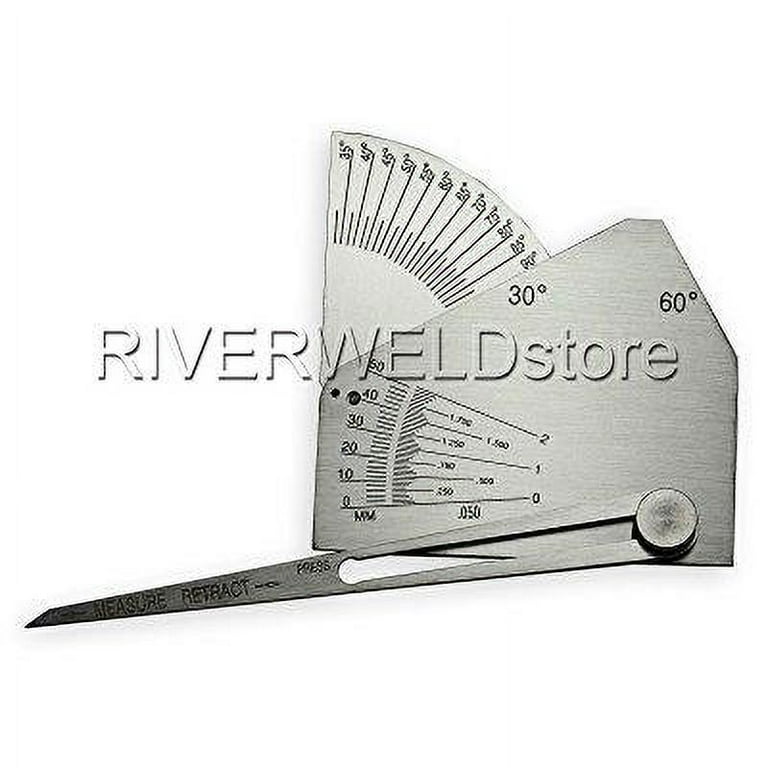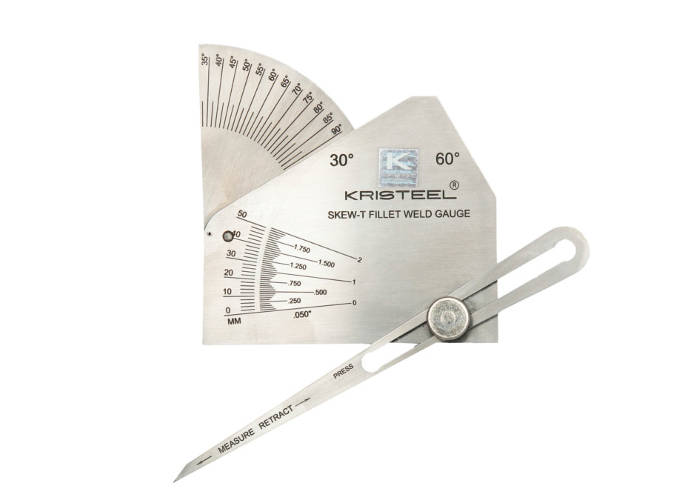Top Techniques for Measuring Gauge Fillet Weld Precisely
Top Techniques for Measuring Gauge Fillet Weld Precisely
Blog Article
Ingenious Strategies to Fillet Weld Evaluation and Screening: Enhancing Weld Top Quality and Compliance Requirements
In the realm of welding, the quality and integrity of fillet welds play an essential duty in making certain the architectural soundness and reliability of various industrial components. With the constant drive for improved efficiency and compliance with stringent standards, the expedition of cutting-edge methods to fillet weld assessment and testing has come to be necessary. As sectors advance, the typical approaches might no longer suffice in fulfilling the demands of modern welding applications (Gauge Fillet Weld). By accepting sophisticated technologies and techniques, a new perspective of opportunities arises in the realm of weld high quality evaluation and adherence to conformity standards.
Advanced Non-Destructive Screening Methods
Making use of cutting edge technologies, advanced non-destructive screening approaches play a critical duty in ensuring the integrity and top quality of fillet welds. These methods, such as phased array ultrasonic testing (PAUT) and magnetic fragment testing (MPT), offer thorough insights right into the weld's inner structure without creating any kind of damages to the material. PAUT, for circumstances, makes use of multiple ultrasonic aspects to evaluate the weld from various angles, offering a comprehensive visualization of prospective flaws like absence of fusion or fractures.
In A Similar Way, MPT works in identifying surface-breaking problems by using a magnetic area and iron particles to the weld area. This approach is especially useful for identifying interruptions that might compromise the weld's toughness. By employing these advanced non-destructive testing methods, weld assessors can properly analyze the quality of fillet welds, making sure conformity with industry requirements and laws. The ability to discover problems at an early stage not only improves weld top quality yet additionally avoids pricey rework or failures in structural integrity, highlighting the significance of these innovative screening approaches in welding evaluations.
Robotics and Automation in Assessment

The assimilation of robotics and automation has actually changed the inspection process for fillet welds, enhancing efficiency and accuracy in quality evaluation. Robotics provide exact control and repeatability in checking welds, ensuring trustworthy and constant outcomes. Automated systems can be programmed to adhere to specific evaluation paths, ensuring detailed insurance coverage of welds and decreasing the risk of human mistake.
Robot evaluation systems furnished with innovative sensors can discover and gauge weld features with high precision, offering in-depth information for evaluation. These systems can identify defects such as fractures, absence of combination, and porosity, making it possible for prompt corrective actions to be taken. Furthermore, robotics and automation enable for real-time information collection and evaluation, giving immediate feedback to operators and facilitating quick decision-making processes.
Moreover, the usage of robotics and automation in fillet weld assessment boosts total productivity by minimizing assessment times and boosting examination throughput. By streamlining the inspection process, producers can make certain weld top quality and conformity criteria are met successfully, ultimately bring about cost financial savings and boosted product top quality.
Using Expert System for Evaluation
Fabricated intelligence plays an essential function in boosting the efficiency and precision of analysis in fillet weld inspection processes. By utilizing the power of AI, inspectors can simplify the analysis of weld top quality and compliance requirements, bring about more precise and dependable outcomes. AI formulas can quickly refine huge quantities of information from weld inspections, discovering defects or incongruities that may be challenging to advice understand the nude eye. This innovative modern technology allows real-time surveillance of weld top quality, enabling for immediate restorative actions to be taken if any kind of concerns are detected.
In addition, AI systems can gain from past examination data, continually enhancing their capacity to determine possible defects and deviations in fillet welds. This flexible understanding capability boosts the overall top quality control process, minimizing the chance of human mistake and ensuring that welds fulfill the called for criteria. By integrating expert system into fillet weld evaluation, markets can achieve higher levels of performance, uniformity, and compliance in their evaluation methods.
Portable Equipment for On-Site Examination
Enhancing area examination efficiency, the fostering of mobile tools reinvents on-site assessment processes for fillet welds. These devices supply adaptability and benefit, allowing inspectors to carry out thorough assessments in numerous locations, including difficult or remote environments. Mobile devices such as ultrasonic screening devices, magnetic particle inspection tools, and digital radiography systems provide real-time information and high-resolution imaging capacities, allowing quick decision-making and prompt responses on weld top quality.
One substantial benefit of mobile devices is their capability to enhance assessment procedures, lowering downtime and improving overall performance - Gauge Fillet Weld. Inspectors can conveniently move these devices to different job sites, eliminating the need for delivering heavy machinery or elements to off-site facilities. Additionally, the transportability of these devices promotes cost-effectiveness by reducing transportation costs and speeding up examination timelines
Moreover, the usage of portable devices for on-site inspection advertises aggressive top quality control actions, as examiners can without delay recognize and address any type of prospective welding problems or inconsistencies. By integrating these ingenious technologies right into on-site inspection techniques, welding specialists can guarantee compliance with market requirements and boost weld top quality, eventually bring about boosted architectural stability and security in various welding applications.
Integration of Data Monitoring Solution

Having maximized on-site inspection procedures with the usage of mobile devices, the following stage includes the seamless integration of data management systems to better enhance performance and data analysis abilities in fillet weld assessment and testing. By incorporating information administration systems into the evaluation process, organizations can streamline information collection, storage, and analysis. This combination enables real-time surveillance of weld quality, immediate identification of problems, and prompt decision-making to fix any type of problems that may arise throughout the evaluation process.
Data administration systems play an essential role in centralizing inspection information, look at this web-site helping with simple accessibility for licensed workers, and guaranteeing data integrity and safety. Through the integration of these systems, inspectors can generate comprehensive records, track historical information for fad evaluation, and boost overall process performance. The assimilation of data management systems makes it possible for seamless communication between various stakeholders entailed in the inspection process, cultivating collaboration and improving general top quality Get More Information control measures. Ultimately, the integration of information monitoring systems offers to elevate the requirements of fillet weld assessment and testing, making sure compliance with sector guidelines and improving weld quality.
Verdict
To conclude, ingenious methods to fillet weld evaluation and screening have substantially improved weld quality and compliance criteria. Advanced non-destructive screening techniques, robotics, automation, expert system, mobile tools, and data administration systems have reinvented the way weld assessments are conducted. By utilizing these innovations, markets can guarantee that welds fulfill the needed top quality standards and regulations, eventually improving overall efficiency and safety in welding procedures.

Having actually optimized on-site assessment processes through the application of portable devices, the following stage includes the seamless assimilation of data monitoring systems to further boost efficiency and information evaluation capabilities in fillet weld examination and testing. Eventually, the assimilation of information monitoring systems offers to elevate the requirements of fillet weld examination and screening, guaranteeing compliance with market policies and improving weld quality.

Report this page